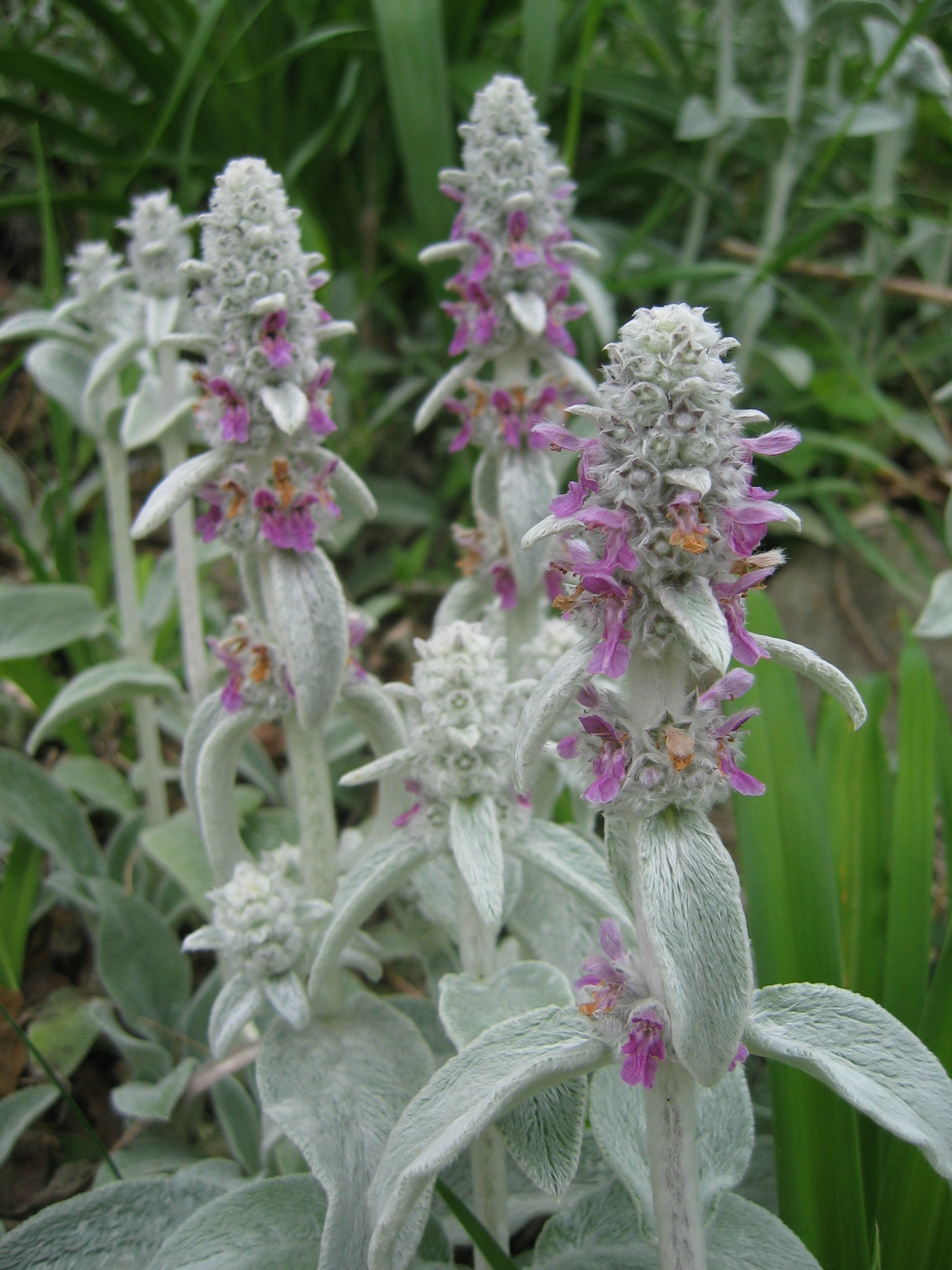
For obvious reasons, Lamb’s Ears are popular in the garden. No one can resist feeling the soft, woolly leaves, and the silvery-whitish foliage is a striking accent even when the plants are not blooming. The flowers are a pleasantly contrasting pinkish-purple. They produce many fertile seeds, and the seeds wash downhill and sprout somewhere else, and soon you have colonies of Lamb’s Ears where nobody planted them. But it’s hard to object to them much.

Gray describes the genus Stachys; in his time, this particular species had not established itself in the wild enough for him to take notice of it.
STÀCHYS [Tourn.] L. HEDGE NETTLE. Corolla not dilated at the throat; upper lip erect or rather spreading, often arched, entire or nearly so; the lower usually longer and spreading, 3-lobed, with the middle lobe largest and nearly entire. Stamens 4, ascending under the upper lip (often reflexed on the throat after flowering); anthers approximate in pairs. Nutlets obtuse, not truncate. — Whorls 2-many-flowered, approximate in a terminal raceme or spike (whence the name, from stachys, a spike).
Although Gray does not describe the species S. byzantina, no description is really necessary. No other Stachys in our area has anything like the silver-haired foliage of this plant; it is nearly impossible to misidentify.









